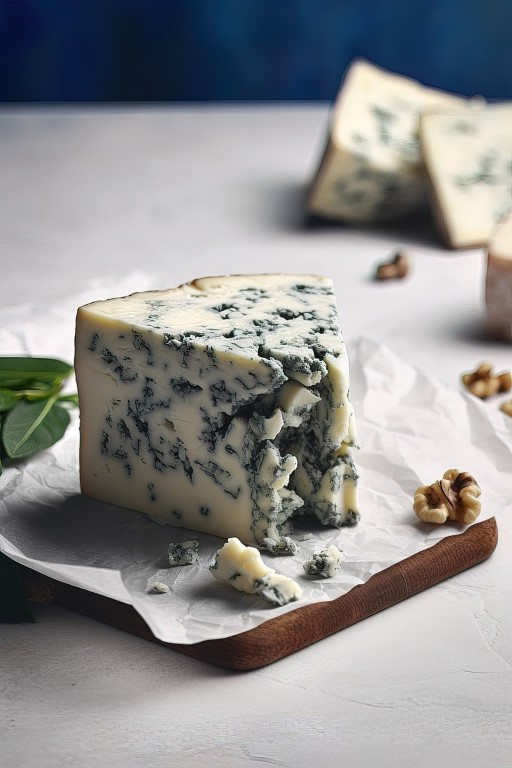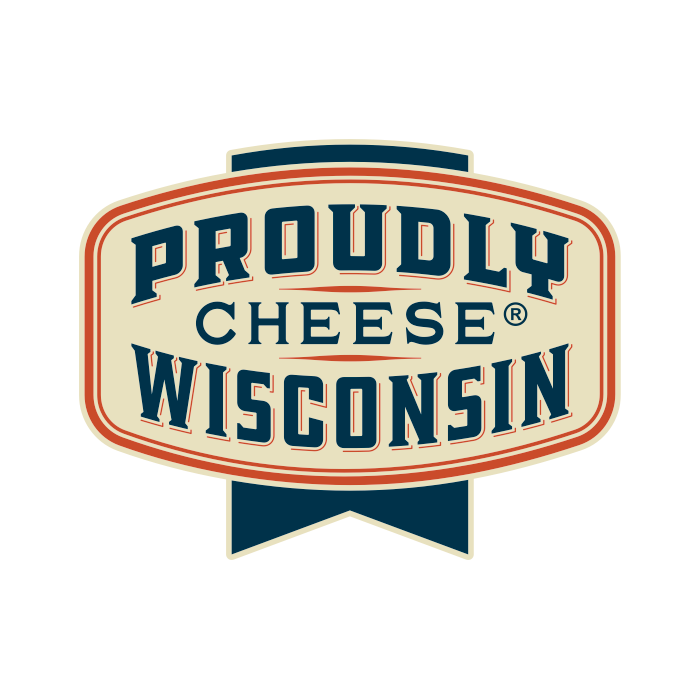Article by Addison Austin-Lou, 2024 HRN Research and Radio Intern
 Blue cheese is one of the most polarizing of charcuterie accoutrements. From the pungent smell to misconceptions surrounding moldy foods, blues get a bad wrap. Here, for the curious but nervous novice, is a crash course in all things blue.
Blue cheese is one of the most polarizing of charcuterie accoutrements. From the pungent smell to misconceptions surrounding moldy foods, blues get a bad wrap. Here, for the curious but nervous novice, is a crash course in all things blue.
There is a romantic myth surrounding the discovery of the first blue cheese. In 7th century France a young shepherd was eating lunch in a cave near his flock. A beautiful maiden walked by and the shepherd got so distracted he left his lunch of cheese and bread in the cave to follow her. It wasn’t until months later he came back to find the cheese covered in mold, and proceeded to eat it. And thus the birth of blue cheese.
As charming as this story is to believe, there is no proof it’s true and the actual origins remain a mystery. Wherever blue cheese got its start we now have dozens of varieties that can fit any palate given the opportunity.
But first, what’s with the mold? This is often the biggest hold up when it comes to people trying blue cheese. There are a handful of fungi in the Penicillium family that are responsible for the trademark mold, the most common of these is P. Roqueforti. These are not to be mistaken with the strains that produce antibiotics or those that spoil food.
During production mold is introduced to the cheese curd prior to it being formed into wheels. As the cheese ages oxygen is injected into the wheels to allow the mold to flourish. This mold breaks down fats in the cheese that produce a spectrum of flavors. Blue cheese can range from salty and tangy to nutty and sweet.
Blues are often made from cow’s milk but sheep, goat, and even buffalo milk can also produce fun and funky varieties. It is a good rule of thumb when trying your first blues to lean toward younger creamy types for a mild introduction. Aged, crumbly blue cheeses are known to have a bit more piquancy and can be intense on an unprepared palate.
As we’ve learned, France lays claim on the creation of blue cheese and they produce some delicious ones. Their most famous, Roquefort, known as the king of blues is protected by French law. Work your way up to this one though, it is aromatic and complex. Its melt-in-your-mouth cow’s milk cousin Fourme d’Ambert is the perfect gateway blue. Sweet notes balanced by a spiced earthiness allows your taste buds to adjust to this new world of cheese.
Northern Italy’s Gorgonzola Cremificato is another prime candidate for your first blue. This cheese develops a smooth, spreadable paste with a texture similar to brie. Paired with a fresh fig or medjool date, this bite is sure to turn any blue-averse palate. In this same vein, Germany’s Cambozola Black label is another easily accessible triple cream blue. The name is a portmanteau of its “parent cheeses” camembert and gorgonzola.

Let’s not give Europe all the credit for creating delectable blues though, shall we? Wisconsin, a state that dreams in cheese, produces an array of blues worthy of being your first moldy bite. The Indigo Bunting is an award-winning ultra creamy blue from Deer Creek Cheese. With a mix of cow and sheep’s milk, velvety texture, and delicate veins, this is a special start to your blue cheese adventure.
Buttermilk blues are particularly good to look out for as a novice. Due to their higher butterfat content they are known to be smooth and mild. Roth Cheese makes a brilliant example. Made with fresh milk from local Wisconsin farms, their Buttermilk Blue is perfect for snacking with a drizzle of honey or using in salad dressing and pasta recipes.
Next up is Heritage Blue Cheese from Kingston Creamery, an amish farmstead cheese made with longstanding traditional techniques. The cows and goats who produce the milk graze on pasture and are milked by hand. You can taste the attention to detail and history in this cheese. If you want to learn more about Wisconsin’s wonderland of cheese and their mission to support the industry through education visit WisconsinCheese.com.
Now that you’ve got a starting point on the cheese itself, let’s chat about pairings. If you’re a wine fan, Zinfandel, Malbec, and sweeter Bordeaux styles are a great place to start. Some blues are traditionally served as a dessert cheese, and nothing beats a tawny port served alongside.
In terms of beer New England Style IPAs are a match made in heaven, go for something fruit forward to cut the funk. If you’re feeling bold, reposado and añejo tequilas are a surprisingly brilliant accompaniment.
Hopefully now you’re feeling a little braver about blue cheese, and ready to embrace those delightful microbes that bring us so much flavor. If you’re still a bit hesitant, go chat with your local cheesemonger and let them walk you through a tasting before you pull the trigger on buying large portions. Your new favorite cheese may just surprise you.
